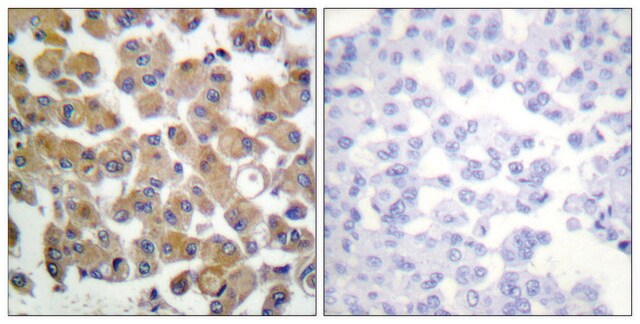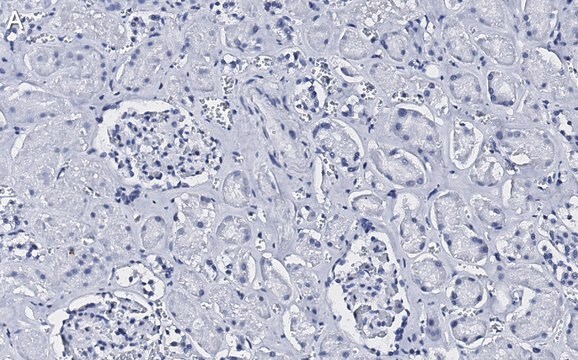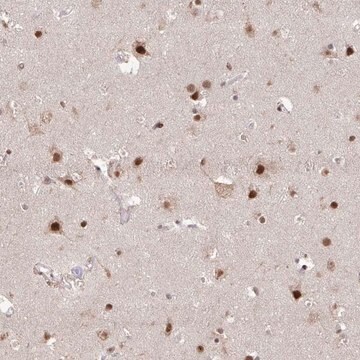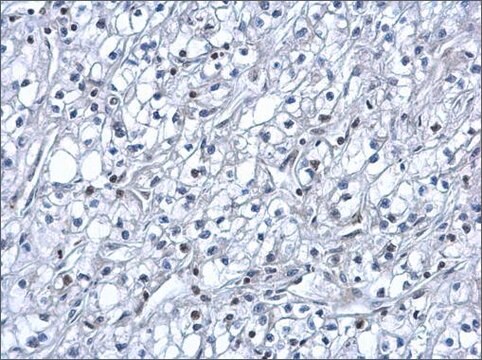H3284
Anti-Histone Deacetylase 1 (HDAC1) antibody produced in rabbit
IgG fraction of antiserum, buffered aqueous solution
Sinónimos:
Anti-GON-10, Anti-HD1, Anti-KDAC1, Anti-RPD3, Anti-RPD3L1
About This Item
Productos recomendados
origen biológico
rabbit
Nivel de calidad
conjugado
unconjugated
forma del anticuerpo
IgG fraction of antiserum
tipo de anticuerpo
primary antibodies
clon
polyclonal
formulario
buffered aqueous solution
mol peso
antigen 65 kDa
reactividad de especies
human, mouse
envase
antibody small pack of 25 μL
técnicas
immunohistochemistry (formalin-fixed, paraffin-embedded sections): 1:500 using human lymph node sections
immunoprecipitation (IP): 5-10 μL using whole lysate of NIH3T3 cells
microarray: suitable
western blot: 1:20,000 using nuclear extract from HeLa human epithelioid carcinoma cells
Nº de acceso UniProt
Condiciones de envío
dry ice
temp. de almacenamiento
−20°C
modificación del objetivo postraduccional
unmodified
Información sobre el gen
human ... HDAC1(3065)
mouse ... Hdac1(433759)
Descripción general
Especificidad
Inmunógeno
Aplicación
Immunoblotting: a minimum working dilution of 1:20,000 is determined using a nuclear extract of HeLa human epithelioid carcinoma cell line.
Immunoblotting: a minimum working dilution of 1:2,000 is determined using a whole extract of PC-12 rat pheochromocytoma cell line.
Immunoprecipitation: a recommended working volume of 5-10 ml is determined using a whole lysate of NIH 3T3 cells.
Indirect immunoperoxidase staining: a minimum working dilution of 1:500 is determined using protease-digested, formalin-fixed, paraffin-embedded human lymph node sections.
Acciones bioquímicas o fisiológicas
Forma física
Cláusula de descargo de responsabilidad
¿No encuentra el producto adecuado?
Pruebe nuestro Herramienta de selección de productos.
Código de clase de almacenamiento
12 - Non Combustible Liquids
Clase de riesgo para el agua (WGK)
WGK 2
Punto de inflamabilidad (°F)
Not applicable
Punto de inflamabilidad (°C)
Not applicable
Equipo de protección personal
Eyeshields, Gloves, multi-purpose combination respirator cartridge (US)
Certificados de análisis (COA)
Busque Certificados de análisis (COA) introduciendo el número de lote del producto. Los números de lote se encuentran en la etiqueta del producto después de las palabras «Lot» o «Batch»
¿Ya tiene este producto?
Encuentre la documentación para los productos que ha comprado recientemente en la Biblioteca de documentos.
Nuestro equipo de científicos tiene experiencia en todas las áreas de investigación: Ciencias de la vida, Ciencia de los materiales, Síntesis química, Cromatografía, Analítica y muchas otras.
Póngase en contacto con el Servicio técnico








